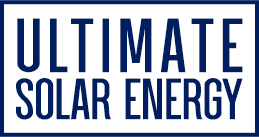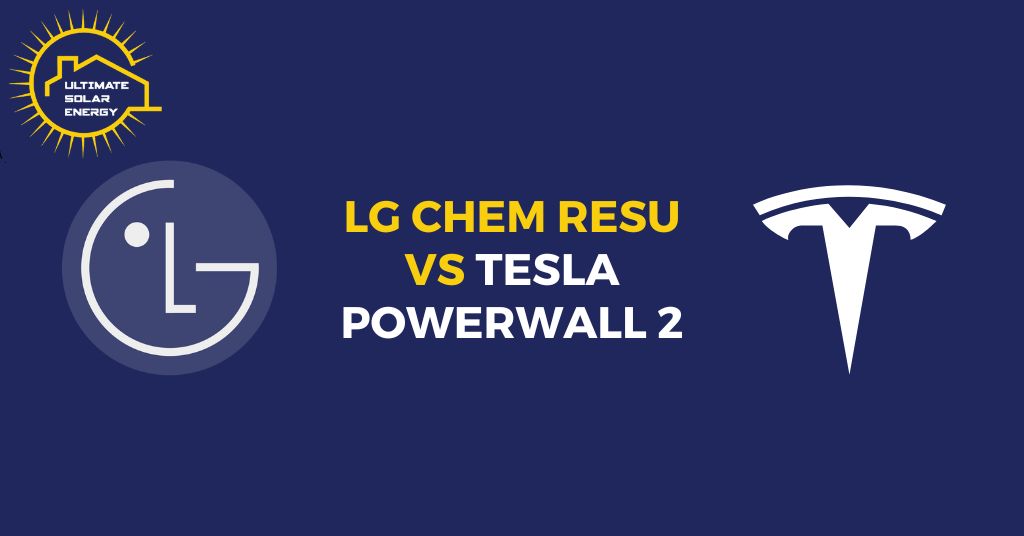LG Chem Resu Vs Tesla Powerwall 2
Solar batteries are the best way to minimize energy costs effectively, as they store extra power generated by solar panels. Keeping the effectiveness of solar batteries, we have compared two top-performing solar batteries, the LG Chem Resu and the Tesla Powerwall 2, our comparison blog will assist solar consumers to get the most suitable option for their solar PV systems. So, let’s start without further ado.

What is a solar battery?
Solar batteries are specially designed power backups that store solar power to ensure consistent power availability during night hours or power outages. During the daytime, solar panels continually produce more power than can be immediately consumed in the household. And if there is excess energy, users without solar batteries, their extra solar power will be directed to the National Grid.
- Solar batteries offer several advantages, some of them are:
- Utilize a greater portion of the energy produced by your solar panels.
- Power your home with renewable solar energy during the evening and night.
- Further reduce your energy bills.
- Decrease dependence on your energy supplier.
Tesla Powerwall 2.0
With a substantial capacity of 13.5 kWh, the Tesla Powerwall stands out as the solar battery with the largest capacity presently available in the market. Also, for those scouting for more efficient energy storage, the option to stack up to 10 Powerwalls solar batteries is available.
Marked by a sleek and modern design, the Tesla Powerwall 2.0 is versatile enough to seamlessly integrate into any home, whether for floor-standing or wall-mounted installation. The good thing is that it offers the flexibility of external installation, as it is entirely weatherproof.
LG Chem Resu
The LG Chem Resu Energy Storage System (ESS) offers a range of capacities, providing flexibility to match the ideal capacity for your solar PV system. Enhancing energy storage is possible by incorporating the Resu Plus Box, specifically engineered to integrate two 48V Resu models (2.9 kW, 4.2 kW, and 8.8 kW batteries).
Tesla Powerwall 2.0 vs LG Chem Resu
Capacity
Although the LG Chem falls short in capacity compared to the Tesla Powerwall 2.0, it’s important to note that no other solar battery can match the Powerwall’s capacity. The capability to stack up to 10 Powerwalls allows for even greater storage of solar energy. However, considering the average daily energy consumption of approximately 10 kWh in the UK, the Powerwall 2.0 might be oversized for many households.
LG Chem offers a variety of solar batteries, ranging from 2.9 kWh to 9.8 kWh, providing users with flexibility. Additionally, the option to stack up to 2 LG Chem solar batteries is available, facilitated by the RESU Plus Box.
Price
LG Chem Resu solar batteries come at a more economical price point compared to the Powerwall 2.0, making them a cost-effective investment. Given the Powerwall 2.0’s higher capacity, boasting 13.5 kWh compared to the largest LG Chem solar battery’s 9.8 kWh, it’s understandable that the Powerwall 2.0 carries a slightly higher cost.
Warranty
Tesla Powerwall 2.0 and the LG Chem Resu provide extensive 10-year warranties, offering identical coverage periods.
After a decade of installation, the Tesla Powerwall 2.0 is guaranteed to retain a minimum of 80% energy capacity, while the LG Chem Resu is expected to maintain at least 60%.
In the rare circumstance of a fault emerging within the initial 2 years, LG covers 100% of the purchase costs (if eligible), decreasing to 72% after 3 years of installation.
Uninterruptible Power Supply (UPS)
A notable advantage of the Tesla Powerwall 2.0 is its Uninterruptible Power Supply feature when paired with a Backup Gateway 2. During power outages, many solar batteries may cease to function, but the Powerwall 2.0 continues to operate.
The Storm Watch feature enables the Powerwall 2.0 to monitor the local forecast and charge up in anticipation of an incoming storm. Therefore, with the Tesla Powerwall 2.0 equipped with Backup Gateway 2.0, a reliable power supply is ensured in the event of a power cut.
LG Chem Resu Vs Tesla Powerwall 2: Who is the Winner?
For homes with elevated power needs, the Powerwall 2.0 emerges as the preferred choice, attributed to its substantial 13.5 kWh capacity. Also, the option to stack up to 10 units ensures adaptability, allowing the solar battery to expand alongside any future increases in energy consumption.
However, for the small to medium power requirement vicinities, the LG Chem Resu stands out as a dependable energy storage system, offering a variety of capacities to precisely match the requirements of your home.
The Bottom Line
At this point, it is essential to understand that every homeowner has distinct power requirements, and it is significant to evaluate these before investing in solar backups.
At Ultimate Solar Energy, we make your decision-making process so simple. We design customized solutions based on your requirements, using only the most premium products.
Get a Free Quote now!

